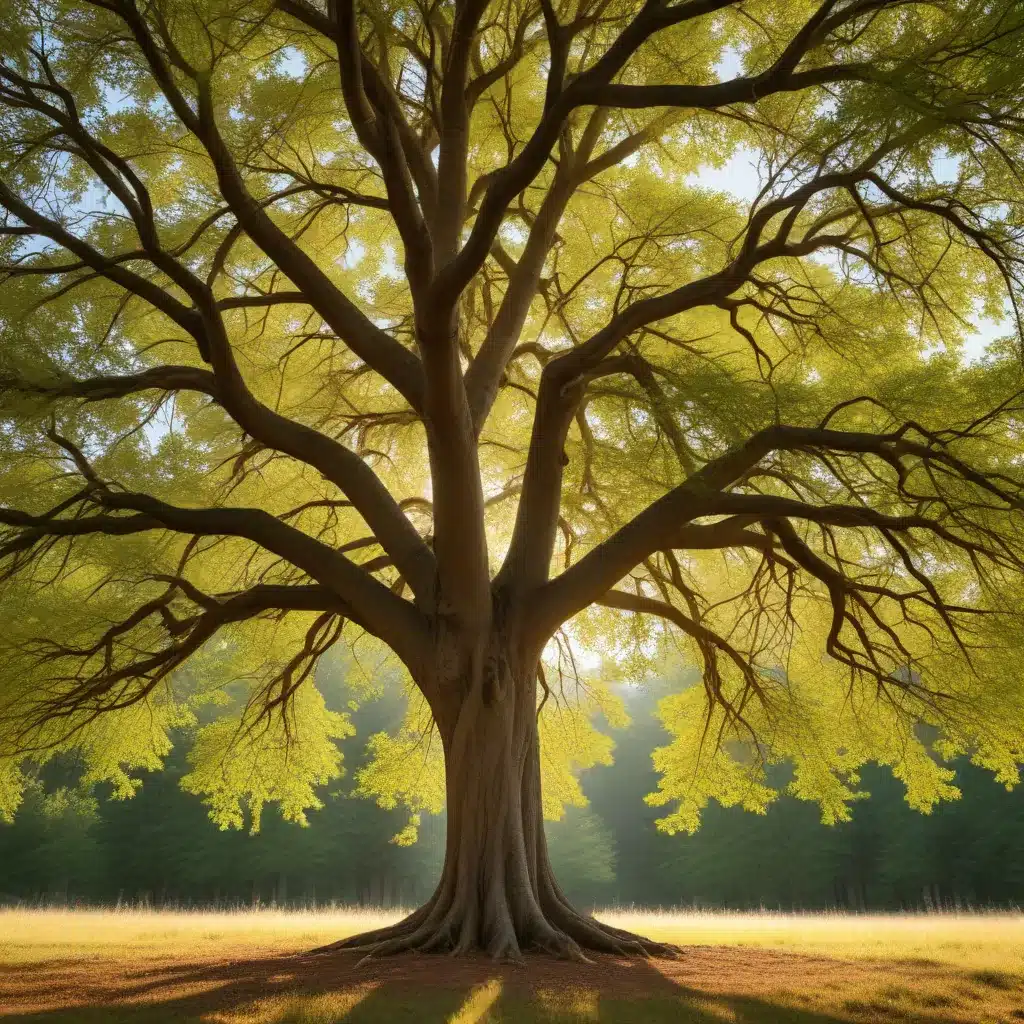
As tree care specialists at TriCounty Tree Care, we are fascinated by the intricate ways in which trees navigate the rhythms of the seasons. Behind the outward transformations of foliage and bark lies a complex symphony of biological processes, honed over millennia to ensure the survival and prosperity of these remarkable organisms. Join us as we delve into the hidden workings of seasonal tree behavior and uncover the remarkable adaptations that enable trees to thrive in the face of ever-changing environmental conditions.
Tree Biology and Physiology
At the heart of a tree’s seasonal journey lies its fundamental plant anatomy and morphology. The trunk, branches, leaves, and roots work in concert, each playing a vital role in the tree’s overall health and growth. As the seasons shift, these structures undergo remarkable transformations, adjusting to the changing environmental cues that guide a tree’s life cycle.
The process of photosynthesis, in which trees harness the sun’s energy to produce nutrients, is a prime example of this seasonal dynamism. As daylight hours fluctuate throughout the year, the chlorophyll within a tree’s leaves responds accordingly, ebbing and flowing to capitalize on the available light. This intricate dance not only fuels the tree’s growth but also governs the vibrant displays of autumn foliage, as the chlorophyll breaks down to reveal the underlying carotenoid and anthocyanin pigments.
Equally important are the nutrient cycling mechanisms that enable trees to adapt to the ebb and flow of resource availability. During the growing season, roots actively absorb minerals and water from the soil, transporting these essential elements upward to nourish the leaves and other aboveground structures. As winter approaches, the tree redirects these resources into its cambium, the vital layer of living cells responsible for diameter growth, ensuring its survival through the dormant months.
Seasonal Tree Behavior
The rhythmic patterns of a tree’s phenology and life cycle are closely attuned to the environmental cues of the seasons. As daylight hours and temperatures fluctuate, trees respond with remarkable precision, initiating a cascade of physiological changes to ensure their continued prosperity.
Dormancy is a prime example of this seasonal adaptation. As winter approaches, trees enter a state of bud break, wherein the buds that have been dormant throughout the colder months begin to swell and eventually unfurl, giving rise to new leaves and branches. This process is triggered by a complex interplay of environmental factors, including decreasing daylength, dropping temperatures, and shifting precipitation patterns.
Conversely, as summer transitions into autumn, trees prepare for the onset of dormancy by gradually shutting down their photosynthetic machinery. The leaves, no longer needed to capture sunlight, begin to break down their chlorophyll, revealing the vibrant hues of carotenoids and anthocyanins that paint the landscape in a tapestry of gold, red, and orange.
Factors Influencing Tree Growth
The growth and development of trees are shaped by a delicate balance of abiotic and biotic factors, each playing a crucial role in determining a tree’s overall health and resilience.
Abiotic factors, such as soil composition, moisture availability, sunlight exposure, and temperature, can have a profound impact on a tree’s ability to thrive. For example, a tree growing in nutrient-rich, well-drained soil will exhibit markedly different growth patterns than one struggling to survive in a harsh, arid environment.
Equally important are the biotic factors, which encompass the complex web of interactions between trees and the living organisms that surround them. Symbiotic relationships with mycorrhizal fungi, for instance, can dramatically enhance a tree’s ability to absorb water and nutrients from the soil, while herbivory by insects or pathogenic infections can severely compromise a tree’s vigor.
As the climate continues to change, these factors are becoming increasingly dynamic, posing new challenges for the long-term survival of many tree species. Altered precipitation patterns, rising temperatures, and increased frequency of extreme weather events can all have profound implications for a tree’s ability to adapt and thrive.
Tree Adaptations for Growth
In the face of these ever-changing environmental conditions, trees have evolved a remarkable array of structural and physiological adaptations to ensure their continued prosperity.
At the structural level, trees have developed specialized features to cope with the demands of their surroundings. The bark, for example, serves as a protective barrier against physical damage, insect infestations, and temperature extremes, while the root system anchors the tree firmly in the soil and facilitates the uptake of essential nutrients and water.
Physiologically, trees have honed intricate mechanisms to regulate their internal processes in response to seasonal cues. The vascular system, responsible for the transport of water, nutrients, and signaling molecules, undergoes dramatic changes throughout the year, adjusting its flow patterns to accommodate the tree’s varying needs. Similarly, the hormonal regulation of growth, dormancy, and stress response pathways allows trees to fine-tune their development to the rhythms of the seasons.
These evolutionary strategies have been refined over countless generations, enabling trees to not only survive but thrive in the face of a constantly changing environment. By understanding the nuanced interplay of these adaptations, we can better appreciate the remarkable resilience and versatility of these arboreal wonders.
At TriCounty Tree Care, our mission is to preserve, protect, and nurture the remarkable trees that grace our landscapes. By delving into the mysteries of seasonal tree behavior, we can develop more effective tree care practices that support the long-term health and vitality of these vital components of our ecosystems. Join us on this journey of discovery as we uncover the hidden secrets that allow trees to thrive, season after season.


